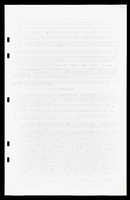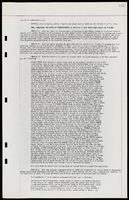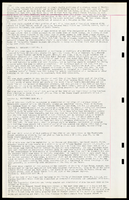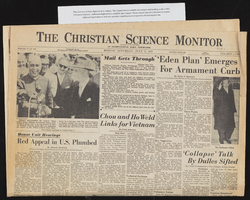Search the Special Collections and Archives Portal
Search Results
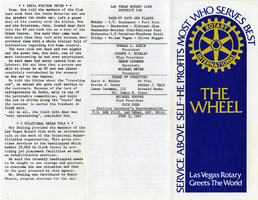
The Wheel Las Vegas Rotary Club newsletter, June 3, 1982
Date
Archival Collection
Description
Text
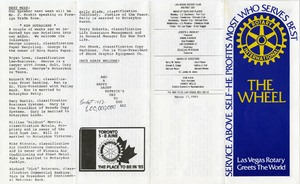
The Wheel Las Vegas Rotary Club newsletter, March 17, 1983
Date
Archival Collection
Description
Text

Transcript of Jim Gans by Claytee D. White, January 20, 2013
Date
Archival Collection
Description
Text
L. F. Manis Photograph Collection
Identifier
Abstract
The L. F. Manis Photographs contain photographic prints, photographic slides, and photographic negatives depicting Southern Nevada from approximately 1900 to 1969, with a bulk of the materials dating from 1930 to 1940. The photographs primarily depict the construction, dedication, and various parts of the Hoover (Boulder) Dam, including the dam's upstream and downstream faces, intake towers, spillways, bridges, crest, outlet works, visitors' accommodations, and powerhouse. The photographs also depict Lake Mead, the reservoir created by the Hoover Dam, and the Colorado River, which is dammed by the Hoover Dam. The photographs also include views of desert landscapes in the Southwestern United States, including in Nevada, Arizona, and Southern California. Also depicted in the photographs are the cities of Las Vegas, Nevada and Boulder City, Nevada, including prominent buildings like hotels, casinos, government buildings, and train depots.
Archival Collection
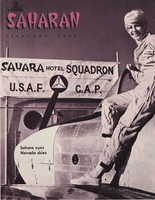
Saharan Magazine from the Sahara Hotel and Casino, February 1966
Date
Archival Collection
Description
The February 1966 edition of The Saharan Magazine, a magazine created by the Sahara Hotel and Casino in Las Vegas, Nevada. Headlines in the magazine include: "Sahara Winder Lineup: Kinds and DeCastros", "Canadian Tops Winners in Sahara Anniversary", "Sahara Airlines Attendance Soars Over 6,000 Mark", "Sahara Becomes "Shooting Headquarters" in 1966", and "Thunderbird Cash Binge!"
Mixed Content

Transcript of interview with Dr. Fiona Kelley by Lisa Gioia-Acres, March 21, 2009
Date
Archival Collection
Description
Dr. Fiona Kelley was born and raised in Connecticut. Her parents were both teachers (though her mother quit teaching to raise their two daughters), and Fiona recalls the European vacations the family took every summer, exploring castles and enjoying picnic lunches. Fiona was educated at Greenwich Academy in Connecticut and Bard College (dance major with art history minor) in New York. She mentions dancing in Acapulco and California and then auditioning and being hired as a cover dancer for Hallelujah Hollywood! at the MGM in Las Vegas. Meanwhile, she had also become licensed in massage and states that as she was making the transition from dancing to production of dance, she and her husband were invited to China. While in China, Dr. Kelley recalls visiting a hospital which specialized in the treatment of AIDS through acupuncture. This led to a decision to learn Oriental medicine, which she pursued once she returned to the United States. She shares many details of her studies
Text

